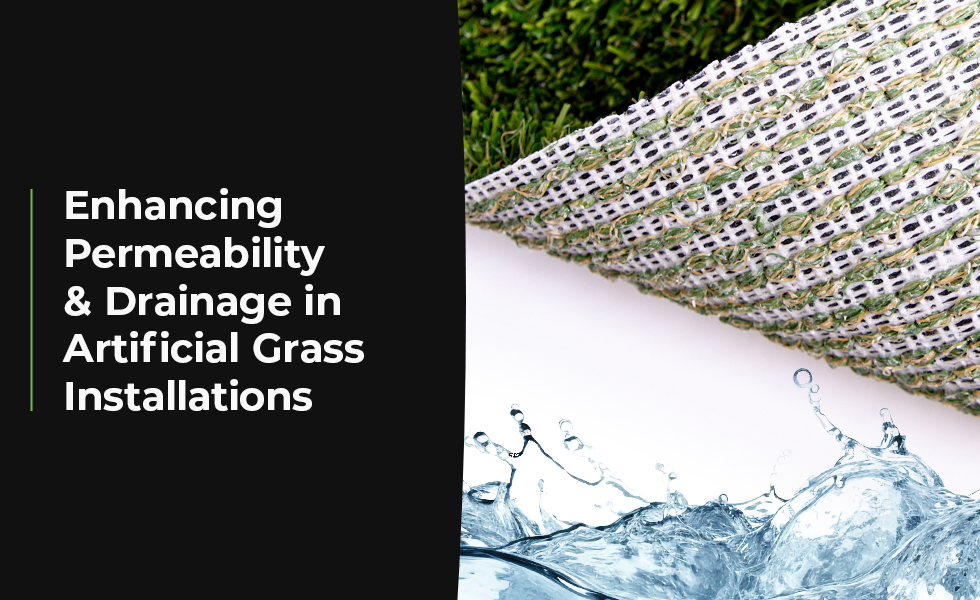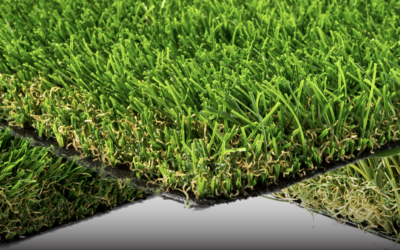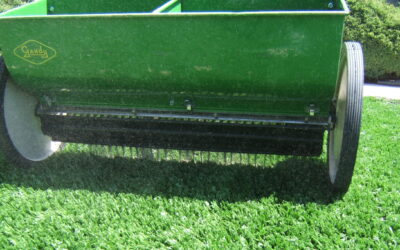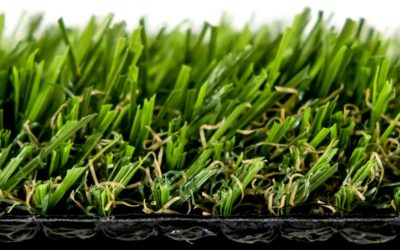
Artificial grass has become a popular landscaping solution, offering a low-maintenance and aesthetically pleasing alternative to natural turf. This article serves as an educational resource for individuals seeking information on optimizing permeability and drainage in artificial grass installations. Understanding that many factors contribute to the water permeability of installed artificial grass is crucial for achieving successful and sustainable results.
Key Contributors to Permeability and Drainage:
1. Base Construction
The foundation of any artificial grass installation is the base or sub-base. Utilizing materials such as crushed stone or gravel, and ensuring proper compaction, is essential for efficient water drainage.
2. Permeable Backing:
The foundation of any artificial grass installation is the base or sub-base. Utilizing materials such as crushed stone or gravel, and ensuring proper compaction, is essential for efficient water drainage.
3. Infill Material:
Infill provides stability and resilience to artificial grass. Some infill materials, like silica sand or rubber granules, contribute to drainage by allowing water to pass through and reach the base.
4. Porous Pavers or Grids:
In areas with high rainfall, the use of porous pavers or grids beneath the artificial grass can enhance drainage. These structures provide support and create channels for water flow.
5. Slope and Grading:
Proper grading and slope of the installation area are crucial for effective drainage. A slight slope encourages water runoff and prevents water accumulation in low-lying areas.
6. Drainage System Integration:
Consider incorporating a subsurface drainage system in areas prone to water retention. Perforated pipes or drainage tiles can direct water away from the surface, optimizing drainage.
7. Maintenance Practices:
Regular maintenance, including brushing to remove debris and ensuring even infill distribution, contributes to optimal drainage performance. Debris accumulation can impede water flow, affecting artificial grass functionality.
8. Product Design:
The design of the artificial grass product itself can impact drainage. Features such as drainage holes, permeable backing materials, and other variations in construction of the turf may be incorporated by manufacturers to enhance water permeability.
At Turf Distributors, we prioritize providing not only high-quality artificial grass products but also valuable information to our customers. Proper installation following manufacturer guidelines is crucial for optimizing permeability and drainage. Whether you are a distributor, retailer, or wholesaler, understanding these key contributors, along with the multitude of factors influencing water permeability, will empower you to offer informed guidance to your clients, ensuring successful and long-lasting artificial grass installations. For more information or to explore our range of artificial grass products, please visit our website.
Thatching in Artificial Grass: Let’s Get Real
If you're contemplating the transition from natural grass to artificial turf, you've likely encountered the term...
Infill for Artificial Grass: Everything You Need to Know
If you're considering installing artificial turf in your yard or sports field, you may have come across the term...
A Complete Guide to Artificial Turf Backing:
Artificial turf has revolutionized outdoor landscapes, from residential lawns to sports fields and commercial spaces....



